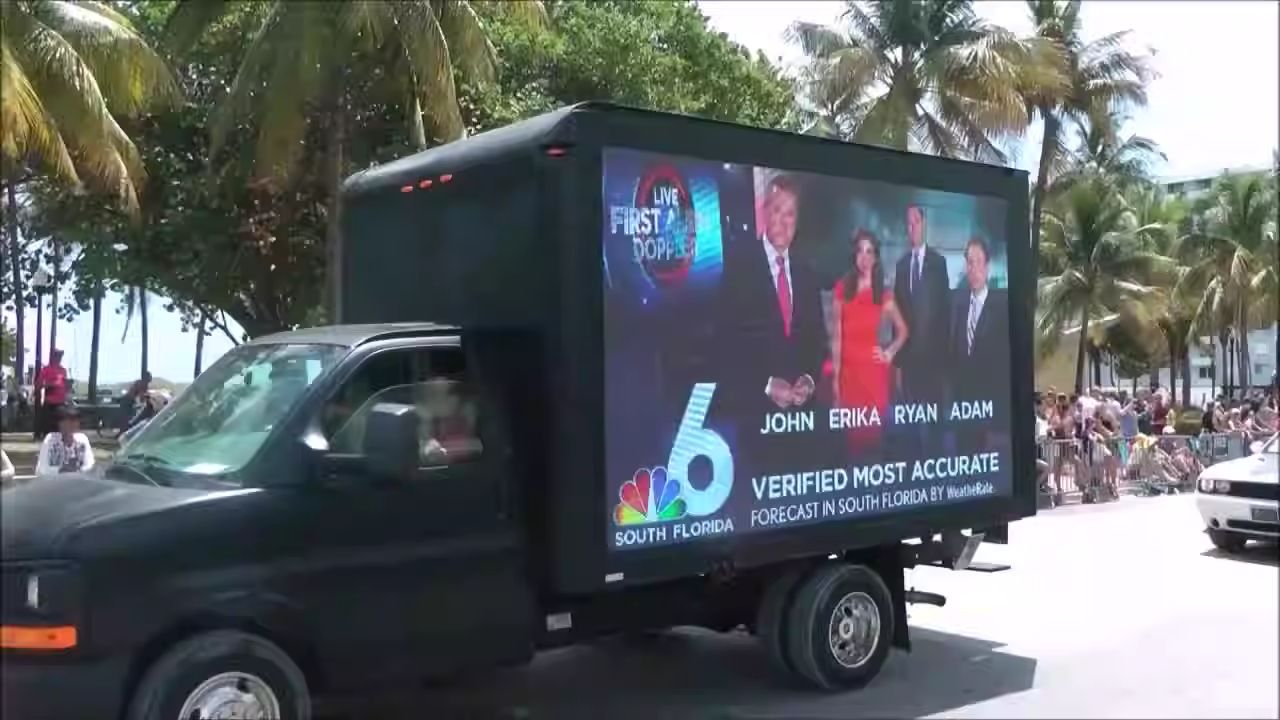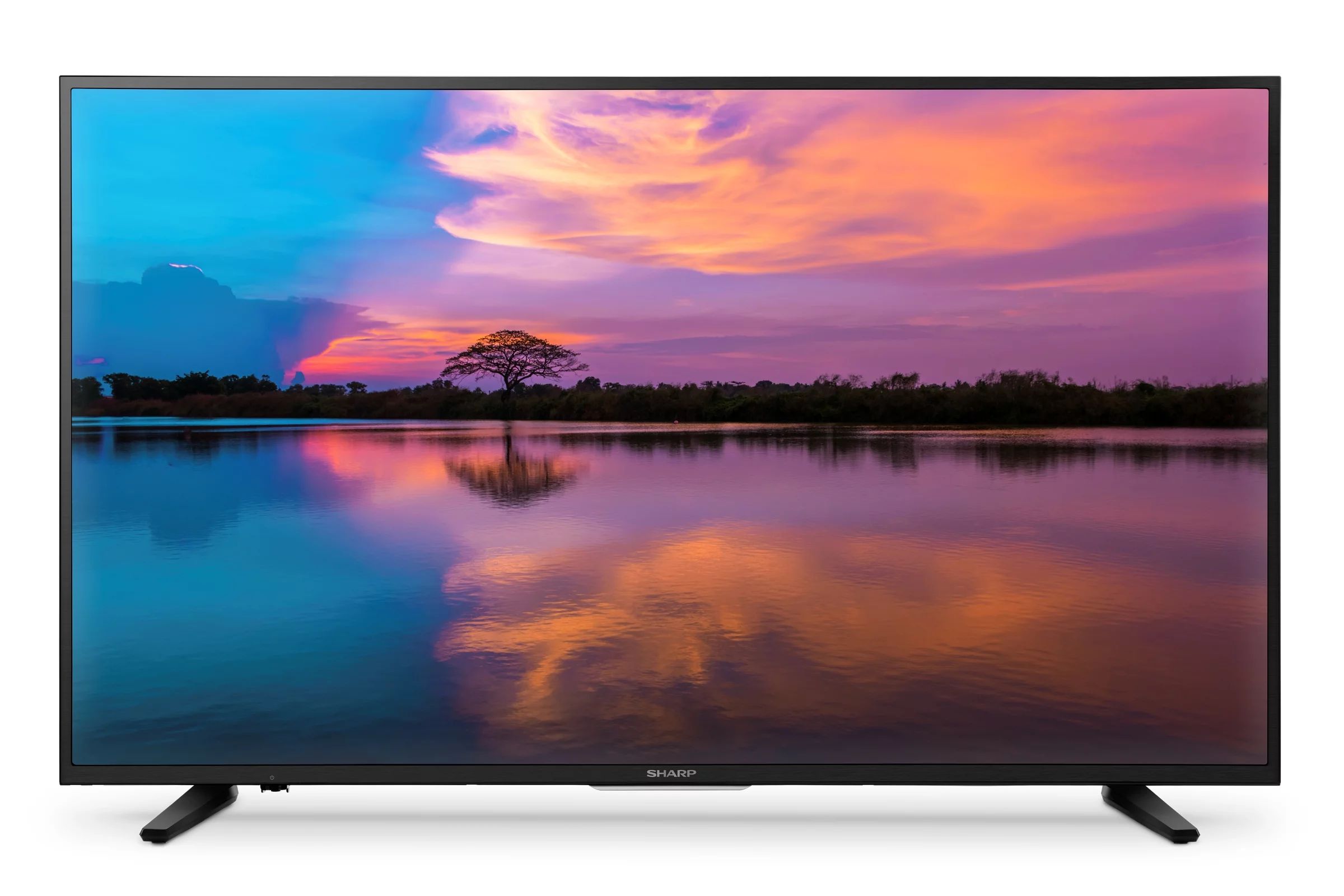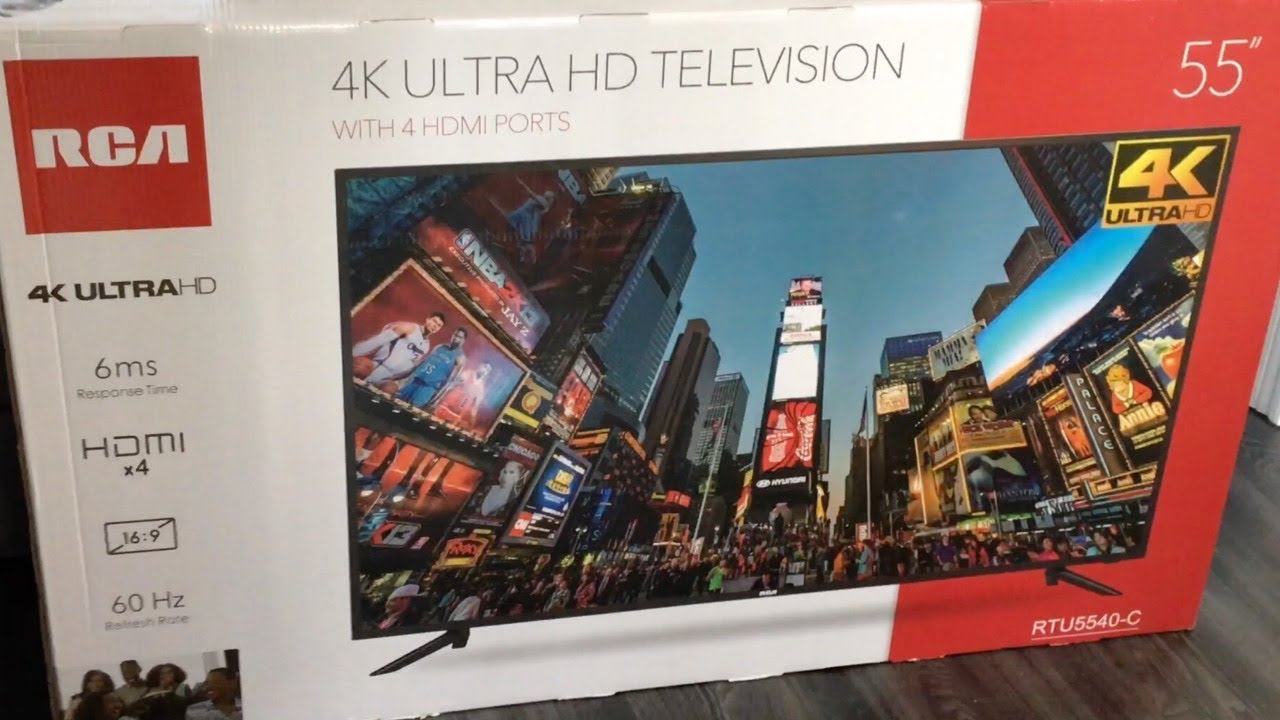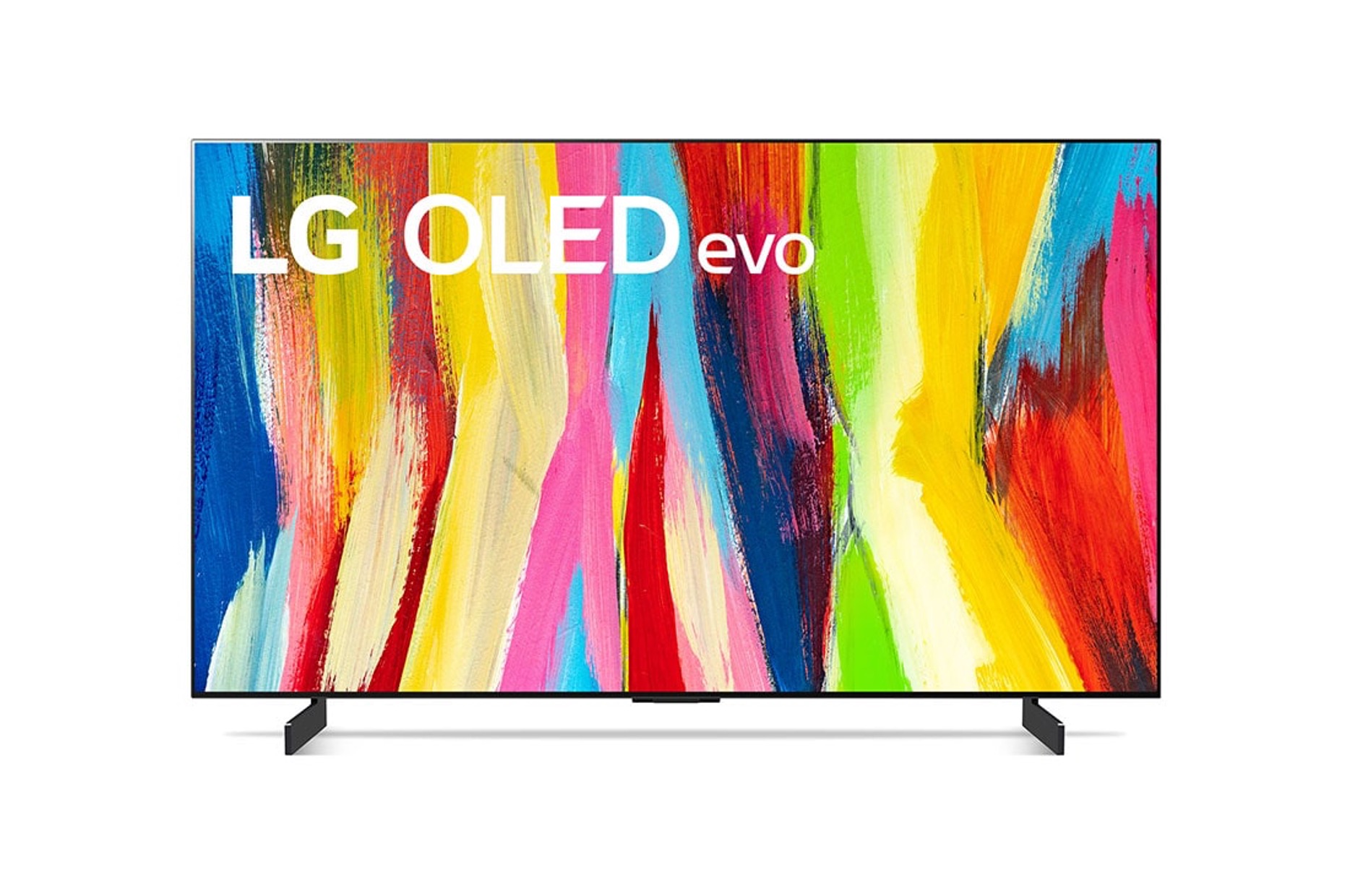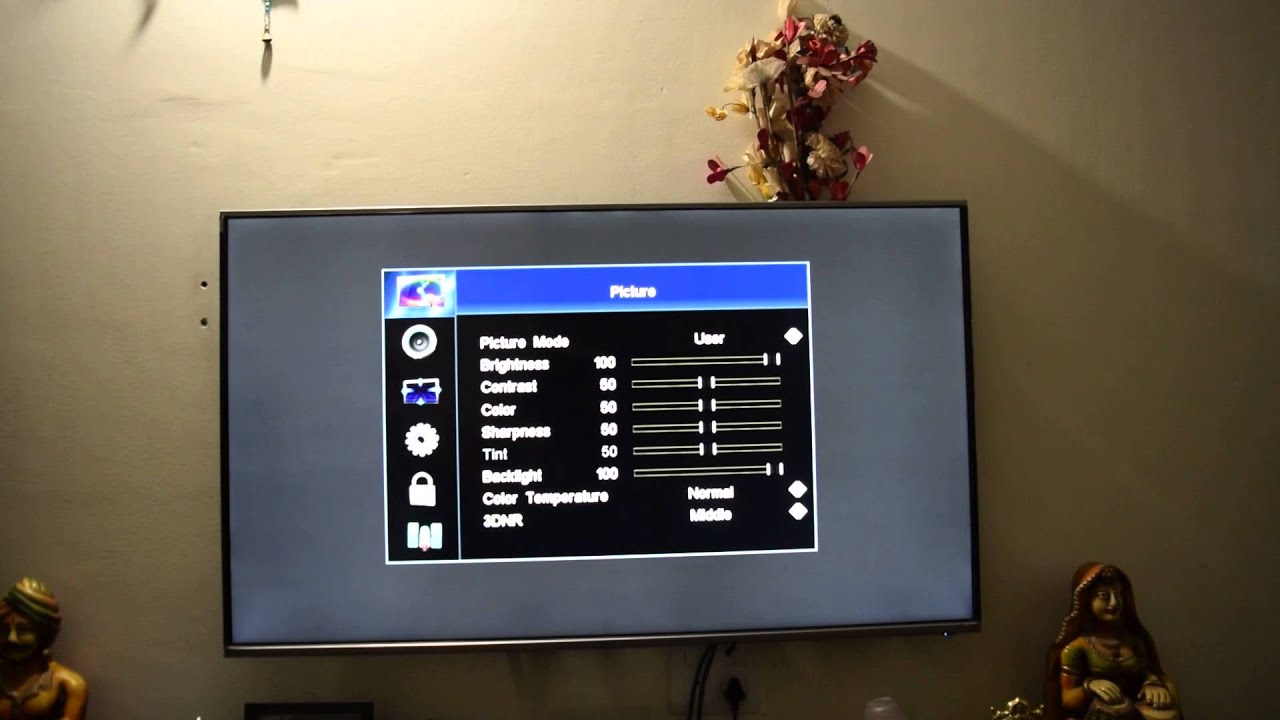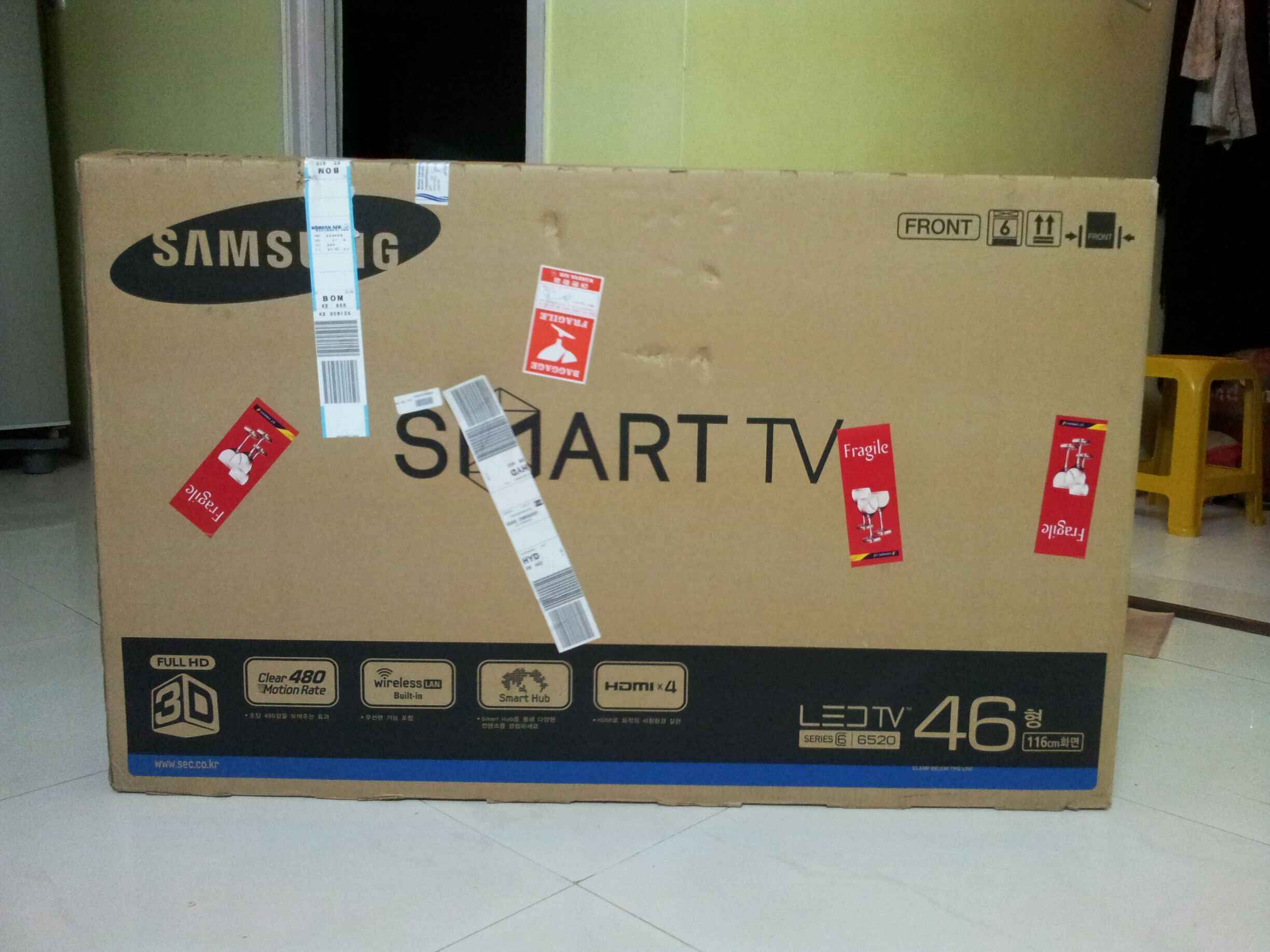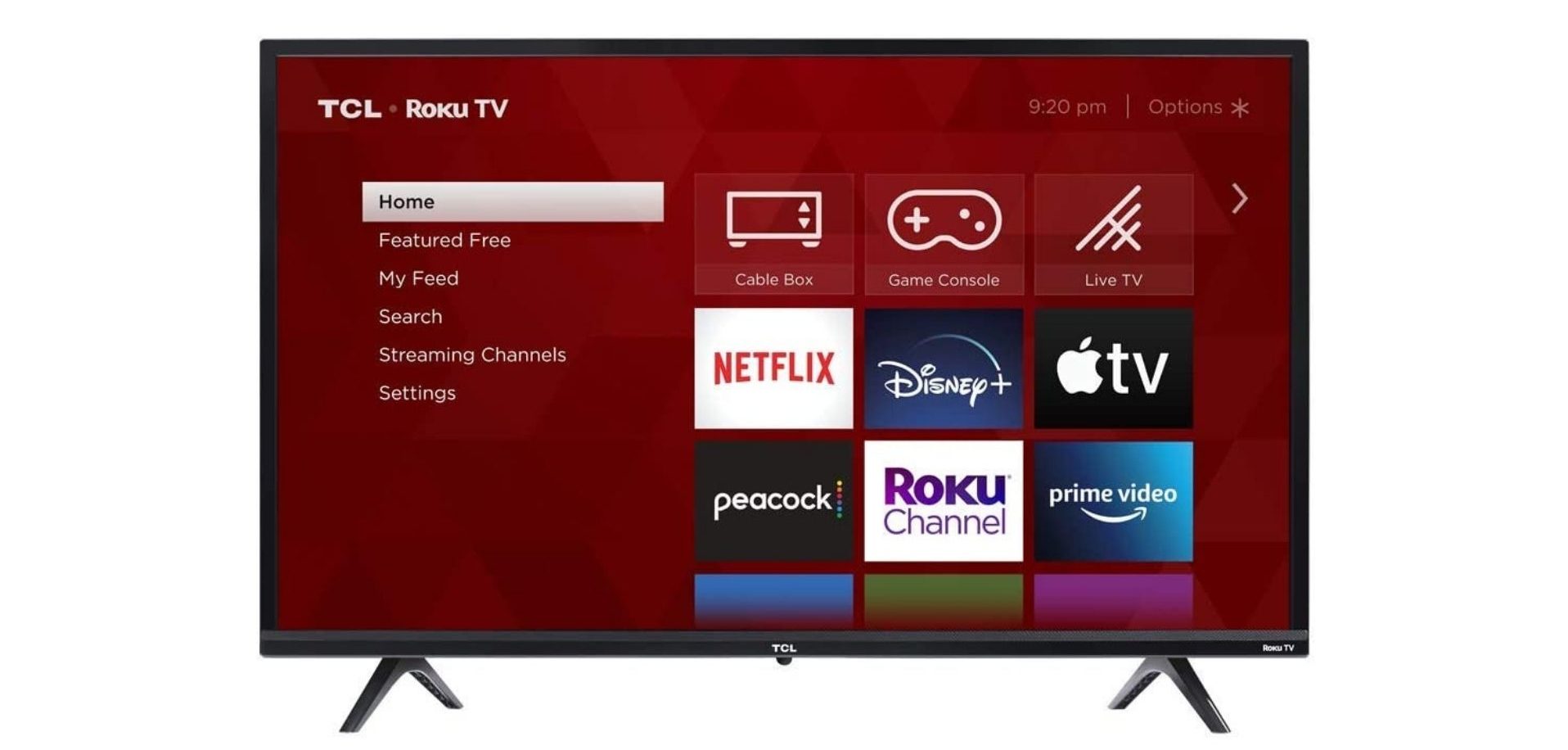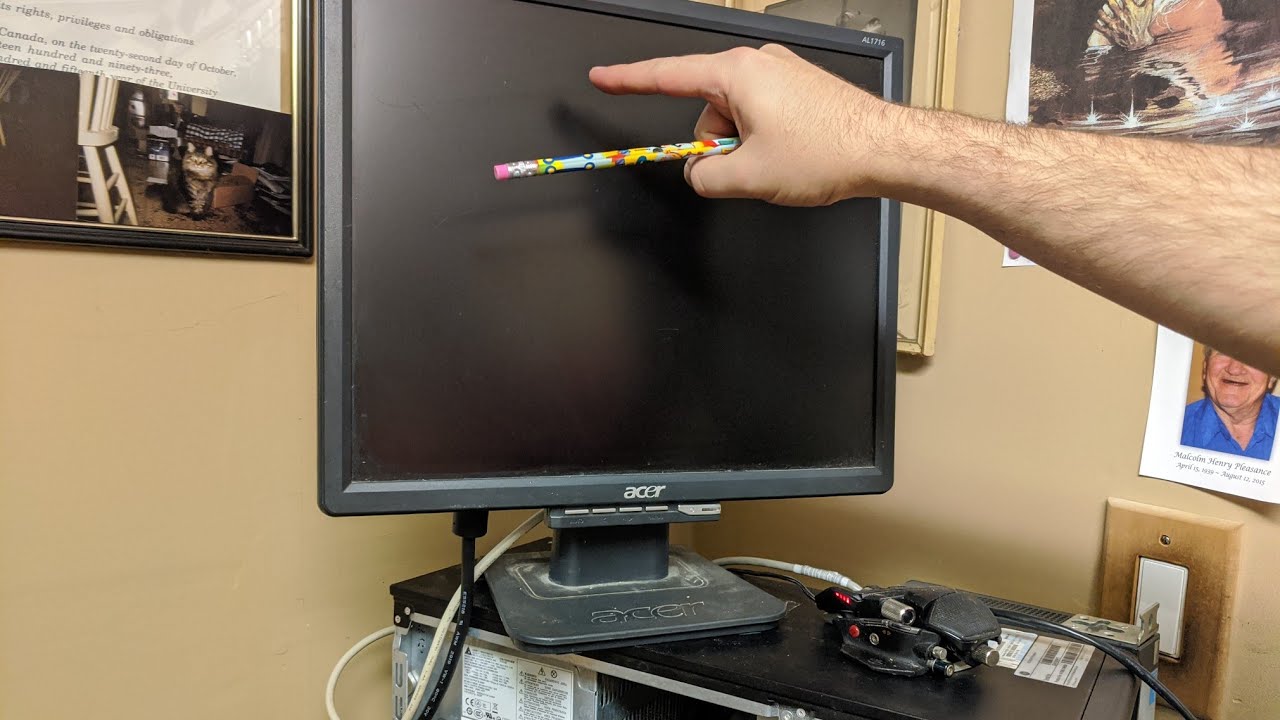Tips for Transporting LED TV Safely
Transporting a fragile and expensive item like an LED TV can be a nerve-wracking task. However, with proper preparation and care, you can ensure that your TV arrives at its new location in perfect condition. Here are some helpful tips to safely transport your LED TV:
- Choose the Right Transport Method: Depending on the distance and circumstances, you can either transport the TV in your own vehicle or hire professional movers. Make sure the transport method is safe and reliable.
- Gather the Necessary Packing Materials: Before you start packing, gather all the necessary materials such as bubble wrap, blankets, packing tape, sturdy boxes, and packing peanuts or foam.
- Disconnect All Cables and Accessories: Before packing the TV, make sure to disconnect all cables and accessories. Keep them organized and labeled to avoid any confusion during the reconnection process.
- Wrap the TV in Bubble Wrap or Blankets: To protect the TV from scratches and impacts, wrap it securely in bubble wrap or blankets. Ensure that the screen and corners are adequately covered.
- Securely Pack the TV in a Sturdy Box: Choose a sturdy box that fits the size of your TV. Place the TV inside the box and fill any empty spaces with packing peanuts or foam to prevent shifting during transportation.
- Label the Box as Fragile: Clearly label the box as fragile and indicate which side should be kept upright. This will ensure that handlers are aware of the delicate nature of the contents.
- Consider Using a TV Shipping Case: If you frequently need to transport your TV, investing in a TV shipping case can provide additional protection. These cases are specifically designed to safeguard TVs during transportation.
- Load the TV Carefully into a Vehicle: When loading the TV into a vehicle, handle it with care. Avoid placing heavy objects on top of it or squeezing it into tight spaces.
- Secure the TV to Avoid Shifting during Transportation: Use straps or bungee cords to secure the TV in place, preventing it from moving around during transportation.
- Drive Smoothly and Avoid Bumps: While on the road, drive smoothly and avoid rough terrain or speed bumps to minimize the risk of damage to the TV.
- Unpack the TV with Care and Connect it Safely: When you reach your destination, carefully unpack the TV and connect it to the power source and any necessary devices. Follow the manufacturer’s instructions to avoid any damage.
- Inspect the TV for any Damage: After unpacking, thoroughly examine the TV for any signs of damage. If you notice any issues, contact the manufacturer or a professional technician for assistance.
- Enjoy your TV in its New Location! Once everything is set up and you’ve ensured the TV is in good condition, sit back, relax, and enjoy your favorite shows and movies on your newly transported LED TV.
Choose the Right Transport Method
When it comes to transporting your LED TV safely, the first step is to choose the right transport method. This decision will largely depend on the distance you need to cover and the circumstances surrounding the transportation. Here are some factors to consider when selecting the transport method:
1.1. Self-Transportation:
If you are moving locally or within a short distance, you may consider transporting the TV in your own vehicle. This gives you more control over the handling of the TV and allows you to carefully monitor its condition throughout the journey. However, it’s important to ensure that your vehicle is spacious enough to accommodate the TV and that it can be securely fastened to prevent any movement during transit.
1.2. Professional Movers:
For long-distance moves or situations where you are unable to transport the TV yourself, hiring professional movers can be a viable option. Professional movers have experience in handling delicate and valuable items like LED TVs and can provide specialized packaging and transportation services. When choosing a moving company, make sure to do thorough research, read reviews, and select a reputable company that has a track record of safely transporting electronics.
1.3. Shipping Services:
If you are moving to a different city or country, you might consider using shipping services specifically designed for transporting valuable items. These services ensure proper packaging and secure handling of your LED TV during transit. However, it’s important to use a reputable shipping company that offers insurance coverage for any potential damage or loss during transportation.
1.4. Specialized TV Transport Companies:
In some cases, it may be beneficial to utilize the services of specialized TV transport companies. These companies have expertise in safely moving and shipping TVs of various sizes and models. They use specialized packaging materials and equipment to ensure maximum protection during transportation. While this option may be more expensive than others, it provides an added level of security and peace of mind.
By carefully considering your specific requirements and the available options, you can choose the most suitable transport method for your LED TV. Remember to factor in the distance, your level of comfort with self-transportation, and the overall value of your TV when making this decision.
Gather the Necessary Packing Materials
Before you begin the process of packing your LED TV for transportation, it’s essential to gather all the necessary packing materials. Having the right supplies on hand will ensure that your TV is adequately protected during the move. Here are some essential packing materials to gather:
- Bubble Wrap or Blankets: These materials are vital for providing cushioning and protection to the TV. Wrap the TV with bubble wrap or secure it with blankets to safeguard against scratches and impacts.
- Packing Tape: High-quality packing tape is essential for securing the bubble wrap or blankets around the TV. It helps to keep the protective layers in place and prevents them from slipping during transportation.
- Sturdy Boxes: Select a sturdy box that is appropriate in size for your LED TV. Make sure it can accommodate the TV comfortably, leaving enough space for additional protective materials.
- Packing Peanuts or Foam: These materials are used to fill any empty spaces inside the box, providing stability and preventing the TV from shifting during transit. This will help reduce the risk of damage caused by movement or impacts.
- Packing Paper: Use packing paper to wrap any smaller accessories, such as remotes or cables, ensuring they are protected, organized, and easily identifiable when it comes time to reconnect them.
- Marker or Labels: Clearly label the box containing the TV as “Fragile” to alert movers and handlers of its delicate nature. You can also use markers or labels to indicate which side of the box should remain upright during transportation.
It’s essential to invest in high-quality packing materials to provide the best possible protection for your LED TV. While it may be tempting to cut corners or use subpar materials, skimping on packing supplies could lead to potential damage during transit.
Consider purchasing these materials in advance to avoid any last-minute scrambling. You can find them at packaging supply stores, office supply stores, or even online retailers. It’s always a good idea to buy a few extra supplies in case you require additional cushioning or wrapping.
By taking the time to gather the necessary packing materials, you can ensure that your LED TV is properly protected and prepared for safe transportation to its new location.
Disconnect All Cables and Accessories
Before packing your LED TV for transportation, it is crucial to disconnect all cables and accessories. Properly handling and organizing these items will help ensure a smooth and efficient packing process, as well as make it easier to set up your TV at the new location. Here are some important steps to follow when disconnecting cables and accessories:
- Take a Photo: Start by taking a photo of the back of your TV. This will serve as a reference for reconnecting the cables and accessories later. It is especially useful if you have multiple devices connected to your TV, as it helps you remember the correct setup.
- Switch Off and Unplug: Turn off your TV and disconnect the power cable from the wall outlet. This will prevent any electrical accidents during the disconnection process.
- Remove HDMI and AV Cables: Carefully remove HDMI or AV cables connected to other devices, such as DVD players, gaming consoles, or sound systems. Gently detach them from both the TV and the external devices.
- Disconnect Power Cable: Unplug the power cable from the TV. Be gentle and avoid pulling on the cord, as it may damage the connector or internal components of the TV.
- Organize Cables: As you detach each cable, take the time to organize and secure them. You can either use cable ties or label them using small adhesive labels. This will help you easily identify each cable during the setup process.
- Wrap and Pack Accessories: If you have any accessories such as remotes, power adapters, or wall mounts, remove them carefully from the TV and bundle them together. Securely wrap them in bubble wrap or packing paper before placing them in a separate bag or box.
- Securely Fasten Cables to TV: After disconnecting and organizing the cables, secure them to the back of the TV using twist ties or cable clips. This will prevent them from tangling or getting damaged during transportation.
By following these steps, you can ensure that all cables and accessories are disconnected properly and safely. Taking a photo of the back of the TV and organizing the cables will make it easier to set up the TV at the new location. Additionally, securely wrapping and storing the accessories will prevent them from getting lost or damaged during transit.
Wrap the TV in Bubble Wrap or Blankets
Protecting your LED TV during transportation is essential to prevent any damage to the delicate screen and internal components. One of the most effective ways to provide cushioning and insulation is to wrap the TV in bubble wrap or blankets. Here are the steps to properly wrap your TV:
- Clean the TV: Before wrapping, ensure that the TV is clean and free from any dust or debris. Use a soft, lint-free cloth to wipe the screen gently. This will prevent any scratches from occurring during the wrapping process.
- Start with Bubble Wrap: Place the TV on a flat surface and lay out a large sheet of bubble wrap. Carefully place the TV face-down on the bubble wrap, ensuring that the screen is protected, and the corners are well-covered.
- Wrap the TV: Roll the bubble wrap around the TV, covering it completely. Use additional layers if necessary, paying extra attention to the corners and the screen. Secure the bubble wrap in place with packing tape or adhesive strips.
- Alternative: Use Blankets: If you do not have bubble wrap, you can substitute it with soft blankets. Place the TV in the center of a blanket and fold the sides over to completely cover it. Use packing tape or straps to secure the blanket tightly around the TV.
- Secure Any Loose Parts: If your TV has a detachable base or any other loose parts, make sure they are secured before wrapping. Wrap them separately and tape them to the TV or place them inside the box with the TV.
- Label the Wrapped TV: Once the TV is securely wrapped, use a marker or label to indicate that it is fragile. This will serve as a reminder to handle it with care during transportation and unpacking.
Remember, the goal of wrapping the TV is to provide protection against scratches, impacts, and vibrations. Both bubble wrap and blankets offer excellent cushioning properties, ensuring that your TV remains safe during transport. If you are using blankets, choose ones that are thick and soft to provide adequate padding.
By taking the time to properly wrap your TV, you can minimize the risk of any damage occurring during transportation. The extra layer of protection will give you peace of mind and ensure that your TV arrives in its new location in perfect condition.
Securely Pack the TV in a Sturdy Box
Once you have wrapped your LED TV in bubble wrap or blankets, the next step is to pack it securely in a sturdy box. Choosing the right box and packing the TV properly will provide additional protection during transportation. Here are the steps to securely pack your TV:
- Select a Sturdy Box: Choose a box that is specifically designed for transporting fragile items. Look for a box that is slightly larger than the TV itself, allowing space for additional protective materials.
- Prepare the Box: Inspect the box for any signs of damage or weakness. Reinforce any weak spots or seams with packing tape to ensure that it can withstand the weight and provide adequate protection.
- Add a Layer of Cushioning: Place a layer of packing peanuts or foam at the bottom of the box to provide cushioning. This will help absorb any shocks or vibrations during transportation.
- Position the TV: Carefully place the wrapped TV inside the box, positioning it in the center. Make sure that it is snugly fit and does not move around. If there is any empty space, fill it with additional packing peanuts, foam, or crumpled packing paper to prevent shifting.
- Add More Cushioning: Once the TV is in place, add another layer of cushioning on top. This can be in the form of packing peanuts, foam, or crumpled packing paper. Ensure that the TV is completely surrounded by cushioning material.
- Close and Seal the Box: Gently close the flaps of the box and seal it securely with packing tape. Use multiple layers of tape to reinforce the closure and prevent the box from opening during transportation.
- Label the Box: Clearly label the box as “Fragile” and indicate which side should remain upright. Also, mark the box with your name, address, and contact information. This will help ensure that the box is handled with care and delivered to the correct destination.
By securely packing your TV in a sturdy box, you provide an additional layer of protection against impacts and movement during transportation. The cushioning materials help absorb shocks, while the proper size of the box ensures that the TV remains in place. Additionally, labeling the box as “Fragile” alerts handlers to exercise caution while moving it.
Remember, using a sturdy box and sufficient cushioning materials is crucial to minimize the risk of damage to your TV during transportation. Taking the time to pack your TV securely will give you peace of mind and ensure that it arrives safely at its new location.
Label the Box as Fragile
Properly labeling the box that contains your LED TV as “Fragile” is an important step in ensuring its safe transportation. By clearly indicating that the contents are delicate, you alert handlers to exercise extra care when handling the box. Here are some key points to consider when labeling the box:
- Use Clear and Bold Markings: When labeling the box, use a marker or label that is easy to read and stands out. Write the word “Fragile” in large, bold letters to ensure that it catches the attention of anyone handling the box.
- Indicate Proper Handling Orientation: In addition to labeling the box as “Fragile,” it’s also helpful to indicate which side should remain upright during transportation. This ensures that the TV is not placed upside down or on its side, which could potentially damage the internal components.
- Add “Handle with Care” and “This Side Up” Labels: Consider using additional labels that indicate “Handle with Care” or “This Side Up.” These labels further emphasize the delicate nature of the contents and remind handlers to exercise caution.
- Multiple Language Labels: If you’re shipping the TV internationally or sending it to a location where multiple languages are spoken, it can be beneficial to include “Fragile” labels in different languages. This ensures that the instructions are clear to handlers who may not understand the language on the primary label.
- Inform Moving Company: If you’ve hired professional movers to transport your TV, make sure to inform them in advance that the contents of the box are fragile. This will ensure that they handle the box with the necessary care and take appropriate precautions during loading, unloading, and transit.
Properly labeling the box as “Fragile” not only alerts handlers to exercise caution but can also help in the event of any insurance claims. If the TV sustains any damage during transit, having clear labels indicating the fragile nature of the contents can support your case when contacting the shipping company or filing an insurance claim.
Remember, the goal of labeling the box as fragile is to ensure that your TV receives special attention and careful handling throughout the transportation process. Taking this extra precaution can significantly reduce the risk of damage and help ensure that your TV arrives at its destination in the same condition it was packed.
Use Packing Peanuts or Foam to Fill Empty Spaces
When packing your LED TV, it’s essential to prevent any movement or shifting inside the box during transportation. To achieve this, it’s important to use packing peanuts or foam to fill any empty spaces. This will provide additional cushioning and protection for your TV. Here’s how to effectively utilize packing peanuts or foam:
- Prepare the Box: Before placing the TV inside the box, line the bottom with a layer of packing peanuts or foam. This will create a soft cushioning base for the TV.
- Place the TV: Carefully position the wrapped TV in the center of the box, ensuring that it is snugly fit. Leave no empty space around the TV.
- Add Packing Peanuts or Foam: Once the TV is in place, fill the empty spaces around it with packing peanuts or tightly packed foam. Use your hands to gently press down on the packing material to compact it and provide a stable environment for the TV.
- Fill All Gaps: Pay special attention to the corners and edges of the box. These areas are especially vulnerable to impacts. Make sure to fill any gaps around the TV, providing a barrier against potential movement within the box.
- Test for Firmness: After filling the gaps, gently shake the box to test the firmness. If you feel any movement, add more packing peanuts or foam until the TV is securely situated in the box.
- Apply Top Layer of Cushioning: Once all empty spaces are filled, add a final layer of packing peanuts or foam on top of the TV. This additional layer will further protect the TV from any potential impacts or shocks during transportation.
- Close and Seal the Box: Finally, gently close the flaps of the box and securely seal it with packing tape. Ensure that the box is well-taped on all sides to prevent it from accidentally opening during transit.
By using packing peanuts or foam to fill empty spaces, you create a secure and stable environment for your TV during transportation. The packing material acts as a cushion, absorbing impacts and preventing the TV from shifting or bumping against the walls of the box.
Remember, the goal is to minimize any movement inside the box to protect your TV from potential damage. Taking the time to properly fill empty spaces with packing peanuts or foam will help ensure that your TV arrives at its destination safely and in optimal condition.
Consider Using a TV Shipping Case
Transporting a delicate and valuable item like an LED TV requires extra precautions to ensure its safe arrival. One option that provides added protection is using a TV shipping case specifically designed to safeguard TVs during transportation. Here are key points to consider when deciding whether to use a TV shipping case:
8.1. Enhanced Protection:
A TV shipping case offers enhanced protection that goes beyond traditional packaging methods. These cases are designed with durable materials and reinforced corners to absorb shocks and impacts, keeping the TV securely in place. They also provide added insulation against temperature changes and moisture, reducing the risk of damage during transit.
8.2. Customized Fit:
One of the major advantages of using a TV shipping case is that it provides a customized fit for your specific TV model. Many cases come with adjustable foam inserts or interior padding that can be molded to match the dimensions of your TV. This ensures a snug and secure fit, minimizing any movement within the case during transportation.
8.3. Easy Handling:
TV shipping cases are designed with convenient handles, wheels, and telescoping handles for ease of handling. This makes it easier to maneuver the case during loading, unloading, and transit. The sturdy construction and built-in features ensure that you can transport your TV with confidence, even if you are doing it yourself.
8.4. Reusability:
A TV shipping case is an investment that can be used multiple times. It provides a reusable and reliable solution for transporting your TV, whether you are moving or need to transport it for an event or exhibition. By using a TV shipping case, you can save money and ensure consistent protection for your TV each time it needs to be transported.
8.5. Considerations:
It is important to note that TV shipping cases come in various sizes and types, so ensure that you choose one that matches the dimensions and weight of your TV. Additionally, check if the case has additional security features such as locks or latch closures to provide extra protection against theft or accidental opening.
While a TV shipping case offers enhanced protection, it may not be necessary for every situation. If you’re transporting your TV for a short distance or are hiring professional movers who provide adequate packaging and handling, it may not be essential to invest in a TV shipping case. However, if you frequently transport your TV or want the peace of mind of additional protection, a TV shipping case is a worthwhile investment.
Ultimately, the decision to use a TV shipping case depends on factors such as the value of your TV, frequency of transportation, and personal preference. Assess your specific needs and consider the benefits of using a TV shipping case to determine if it is the right choice for protecting your LED TV during transportation.
Load the TV Carefully into a Vehicle
When transporting your LED TV, loading it into a vehicle requires careful handling to avoid any damage. Whether you are using your own vehicle or a moving truck, following the proper loading techniques will help ensure the safety of your TV. Here are some important guidelines to consider:
- Measure the TV and Vehicle: Before loading the TV, measure its dimensions, including the length, width, and height. Ensure that your vehicle has enough space to accommodate the TV comfortably without applying excessive pressure or causing it to be squeezed into a tight spot.
- Clear the Loading Path: Clear the path from the TV’s current location to the vehicle. Remove any potential obstacles, such as furniture or other items, to create a clear and unobstructed path for easy and safe movement.
- Enlist Assistance: LED TVs are often large and heavy, so having at least one additional person to help you load and carry the TV is strongly recommended. This helps distribute the weight and reduces the risk of mishandling or dropping the TV. Ensure that everyone assisting you knows the fragility of the TV and handles it with care.
- Use Proper Lifting Techniques: When lifting the TV, bend your knees and use your leg muscles to lift the TV rather than straining your back. Keep your back straight and maintain a firm grip on the TV to prevent it from slipping or falling.
- Use a Dolly or Moving Straps: If available, utilize a moving dolly or furniture straps to transport the TV. These tools help distribute the weight and provide additional stability during the loading process. Secure the TV to the dolly or with straps to prevent any movement during transit.
- Avoid Placing Heavy Objects on Top: When loading the TV into a vehicle, ensure that no heavy objects or items are placed on top of it. The weight of other items can damage or crush the TV, especially during sudden movements or stops.
- Position the TV Securely: Once the TV is loaded into the vehicle, make sure it is positioned securely and cannot tip over or shift during transportation. Place it against a solid surface or secure it using straps, bungee cords, or padding to prevent any movement.
- Consider Using a Blanket or Towel: If there is ample space around the TV in the vehicle, consider placing a soft blanket or towel around it for additional protection. This further cushions the TV and reduces the risk of scratches or minor impacts.
- Drive Carefully: When transporting the TV, drive carefully and avoid sudden stops, accelerations, or rough terrain. These actions can cause the TV to shift or fall, potentially leading to damage. Smooth and cautious driving will help ensure the safety of the TV during transit.
By following these guidelines, you can safely load your LED TV into the vehicle for transportation. Taking time to properly plan and handle the loading process will help ensure that your TV arrives at the desired destination without any damage or complications.
Secure the TV to Avoid Shifting during Transportation
Securing your LED TV inside the vehicle during transportation is crucial to prevent it from shifting or falling. Properly securing the TV will minimize the risk of any damage and ensure its safe arrival at the destination. Here are some important steps to follow when securing your TV:
- Use Straps or Bungee Cords: Fasten the TV securely to the vehicle using straps or bungee cords. Secure these around the TV and attach them to anchor points in the vehicle, such as handles or tie-down hooks. This will prevent the TV from sliding or shifting during transit.
- Use Padding: Place soft padding, such as blankets or towels, around the TV to provide additional protection. This will not only cushion the TV but also prevent it from rubbing against other items or surfaces in the vehicle.
- Use Non-slip Matting: Consider using non-slip matting underneath the TV to prevent it from sliding on smooth surfaces. This will provide an extra layer of stability and ensure that the TV remains in place during transportation.
- Avoid Stacking Heavy Items on Top: Do not place any heavy objects or items on top of the TV during transportation. The added weight can put extra pressure on the TV and increase the risk of damage. Keep the area around the TV clear and free from heavy items.
- Be Mindful of Vehicle Movements: Take caution while driving around corners, going over bumps, or making sudden stops. Be mindful of your vehicle’s movements to prevent any sudden shifts or impacts that could potentially harm the TV.
- Check and Adjust Regularly: Periodically check the TV during transportation to ensure it has not shifted. If necessary, re-adjust the straps or padding to keep the TV securely in place. This will help maintain the integrity of the TV’s positioning throughout the journey.
- Secure Within an Enclosed Space: If possible, transport the TV in an enclosed space within the vehicle, such as the trunk or the backseat area. This will provide an additional layer of protection and minimize the risk of the TV being exposed to external factors.
Properly securing your TV inside the vehicle will help prevent any movement or shifting that could potentially cause damage. Taking the time to ensure that the TV is tightly secured using straps, utilizing padding and non-slip matting, and being mindful of vehicle movements will provide added peace of mind during transportation.
Remember, the goal is to keep the TV in a stable and fixed position to avoid any sudden impacts or jostling. By following these steps, you can greatly reduce the risk of damage and ensure that your LED TV arrives safely at its destination.
Drive Smoothly and Avoid Bumps
Driving smoothly and avoiding bumps and rough terrain is crucial when transporting your LED TV. By practicing proper driving techniques and taking precautions, you can minimize the risk of damage during transportation. Here are some important considerations to keep in mind:
- Drive Cautiously: Maintain a cautious and defensive driving style when transporting your TV. Avoid sudden acceleration, harsh braking, and aggressive maneuvers that could jolt the TV or cause it to shift within the vehicle.
- Observe Speed Limits: Follow speed limits and drive at a moderate speed that is safe for the road conditions. Excessive speed can increase the risk of accidents or jarring movements that could potentially harm the TV.
- Choose Smooth Routes: Plan your route in advance, opting for roads and highways that are well-maintained and relatively smooth. Avoid routes with known potholes, speed bumps, or rough patches that could potentially cause the TV to bounce or jiggle.
- Reduce Vibrations: Minimize vibrations by opting for roads that are known to be smoother and avoiding routes with rough surfaces. Vibrations can be detrimental to the internal components of the TV and may cause damage.
- Use Shock-Absorbing Covers: If available, consider using shock-absorbing covers or blankets specifically designed to dampen vibrations. These covers can provide an extra layer of protection against shocks and minimize potential damage during transportation.
- Secure the TV Adequately: Ensure that the TV is securely fastened and properly padded within the vehicle. Double-check the straps, bungee cords, or other securing methods to make sure they are tightly holding the TV in place, reducing the risk of any movement that could be caused by bumps or sudden stops.
- Inspect the Vehicle: Before embarking on your journey, inspect the vehicle for any issues that could affect the smoothness of the ride. Check the tires, suspension, and shocks to ensure they are in good condition. Well-maintained vehicle components contribute to a smoother ride and help protect your TV.
- Take Extra Precautions in Extreme Weather Conditions: If you’re driving in adverse weather conditions such as heavy rain, snow, or wind, exercise additional caution. Reduced visibility and slippery roads can increase the chance of accidents or sudden movements that could harm the TV. Slow down and adjust your driving accordingly.
By driving smoothly and avoiding bumps and rough terrain, you can significantly reduce the risk of damage to your LED TV during transportation. Being cautious, observing speed limits, and choosing smoother routes will help ensure a safe and secure journey for your TV.
Remember, the goal is to provide a stable and smooth ride for your TV, minimizing any jolts or impacts that could lead to damage. By following these guidelines, you can help preserve the integrity of your TV and ensure it arrives unharmed at its destination.
Unpack the TV with Care and Connect it Safely
Once you have safely transported your LED TV to its new location, it’s important to unpack it with care and connect it properly to ensure its functionality and longevity. Follow these steps to unpack and connect your TV safely:
- Clear the Area: Create a clear workspace by removing any clutter or obstacles around the area where you will be unpacking the TV. This will ensure a safe and uninterrupted process.
- Place the TV on a Stable Surface: Carefully place the TV on a stable and secure surface, such as a TV stand, table, or wall mount. Ensure that the surface can support the weight and size of the TV.
- Remove Packaging Materials: Gently remove any packaging materials such as bubble wrap or blankets from the TV. Take your time to avoid accidentally scratching or damaging the TV while unpacking.
- Inspect for any Damage: Thoroughly inspect the TV for any signs of damage that may have occurred during transportation. Look for cracks, dents, or any other visible issues. If you notice any damage, contact the manufacturer or retailer to seek assistance or file a claim if applicable.
- Connect the Power Cable: Connect the power cable securely to the TV and plug it into a working power outlet. Ensure that the connection is tight and secure.
- Reconnect Cables and Accessories: Reconnect the cables and accessories that you previously disconnected for transportation. Follow the photo you took or refer to the user manual to ensure that each cable is connected to the correct port.
- Power On the TV: Switch on the power button of the TV and use the remote to turn it on. Allow the TV a few moments to power up and initialize. Follow the on-screen instructions, if any, to complete the initial setup process.
- Configure Settings: Adjust the settings on the TV according to your preferences, such as picture quality, sound, and language. Refer to the user manual or manufacturer’s website for detailed instructions on how to customize the settings.
- Test for Functionality: Test different features of the TV, including the display, sound, remote control, and connectivity options. Ensure that all the functions are working correctly. If you encounter any issues, consult the user manual or contact the manufacturer for troubleshooting assistance.
By unpacking the TV with care and connecting it safely, you ensure that it is ready for use in its new location. Taking the time to inspect for damage, properly connect the cables, and configure the settings will help maintain the performance and longevity of your LED TV.
Remember to refer to the user manual provided with your TV for specific instructions and guidelines. Following the manufacturer’s recommendations ensures that you handle and connect your TV in the safest and most appropriate way.
Inspect the TV for any Damage
After unpacking your LED TV and connecting it, it’s crucial to thoroughly inspect it for any signs of damage that may have occurred during transportation. By conducting a careful inspection, you can identify any issues and take appropriate action. Here are the steps to inspect your TV:
- Screen Examination: Start by closely examining the screen for any cracks, scratches, or blemishes. Use a soft, lint-free cloth to wipe away any smudges or fingerprints that may affect the display quality.
- Physical Inspection: Inspect the outer casing of the TV for any visible damage such as dents, chips, or scuffs. Check the edges and corners, where impacts are more likely to occur.
- Functionality Test: Test the various functions of the TV, including the volume, channels, inputs, and remote control. Ensure that all buttons and settings are responsive and functioning as intended.
- Audio and Visual Quality: Assess the audio and visual quality of the TV by playing different content. Listen for any distortion, buzzing, or other audio issues. Check the picture quality for clarity, color accuracy, and any abnormal artifacts such as dead pixels or backlight bleeding.
- Connectivity Check: Test the connectivity options of the TV, such as HDMI ports, USB ports, and audio outputs. Connect external devices and verify that they are recognized and functioning properly.
- Power Supply Inspection: Examine the power cord and plug for any visible damage. Ensure that the connection is secure and not loose. Verify that the power supply is stable, without any flickering or sudden interruptions.
- Document and Report: If you identify any damage or functionality issues, document them through photographs or written descriptions. Record the date and time of the inspection, as well as any relevant details. If necessary, contact the manufacturer or retailer to report the damage and seek assistance or warranty coverage.
Conducting a thorough inspection allows you to promptly address any potential damage, ensuring that it is properly documented and resolved. If you encounter any issues, it’s important to reach out to the manufacturer or authorized service center as soon as possible, providing them with the necessary information and evidence.
Remember to keep all packaging and documentation, as they may be required for warranty claims or return processes. The sooner you address any damage or functionality concerns, the quicker you can seek resolution and enjoy your LED TV in optimal condition.
Enjoy your TV in its New Location!
Now that you have safely transported and set up your LED TV in its new location, it’s time to sit back, relax, and enjoy the entertainment it brings. Here are some tips to make the most out of your TV:
- Optimize Picture and Sound Settings: Take some time to explore the TV’s menu and adjust the picture and sound settings according to your preferences. Fine-tuning these settings can greatly enhance your viewing experience.
- Explore Features and Smart TV Capabilities: If your TV is a Smart TV, explore its various features and capabilities. Discover streaming apps, connect to the internet, and make use of additional functionalities such as voice control or smart home integration.
- Calibrate the Display: For the most accurate and pleasing picture quality, consider calibrating the display using professional calibration tools or hiring a professional calibrator. This can optimize colors, contrast, and overall picture performance.
- Connect External Devices: Connect your gaming console, Blu-ray player, soundbar, or other external devices to enhance your entertainment options. Experiment with different setups and configurations to find the best combination for your needs.
- Use Streaming Services: Explore popular streaming services such as Netflix, Hulu, Amazon Prime Video, or Disney+. Dive into a wide range of movies, TV shows, documentaries, and more. Take advantage of the convenient streaming options available on your Smart TV.
- Keep the TV Clean: Regularly clean the TV screen and casing using a soft, lint-free cloth. Avoid using harsh chemicals or abrasive materials that may damage the screen. Keeping your TV clean ensures optimal viewing and prolongs its lifespan.
- Adjust Lighting Conditions: Consider the lighting conditions in your viewing area. Dim or control the ambient lighting to reduce glare and enhance the picture quality. A well-balanced lighting setup can significantly improve your TV viewing experience.
- Read the User Manual: Familiarize yourself with the user manual provided by the manufacturer. It contains important instructions, troubleshooting tips, and information about additional features that can enhance your usage and address any concerns or questions you may have.
- Prioritize TV Safety: Take necessary precautions to ensure the safety of your TV. Secure it to prevent accidental tipping and protect it from dust, moisture, and extreme temperatures. Following proper maintenance and care guidelines will help extend the life of your TV.
- Organize Cables: Keep cables neat and organized using cable management solutions such as cable ties, cord covers, or cable clips. This will not only minimize clutter but also make it easier to access and maintain your entertainment setup.
With your LED TV properly set up and optimized, take the time to create memorable moments with family and friends. Whether it’s enjoying your favorite movies, binge-watching TV series, or hosting game nights, your TV will be the centerpiece of entertainment in your new location.
Enjoy the immersive and high-quality visual and audio experience that your LED TV provides. Create a comfortable and inviting space to relax and indulge in endless hours of enjoyment. Sit back, grab some popcorn, and immerse yourself in the world of entertainment that your new TV brings!







